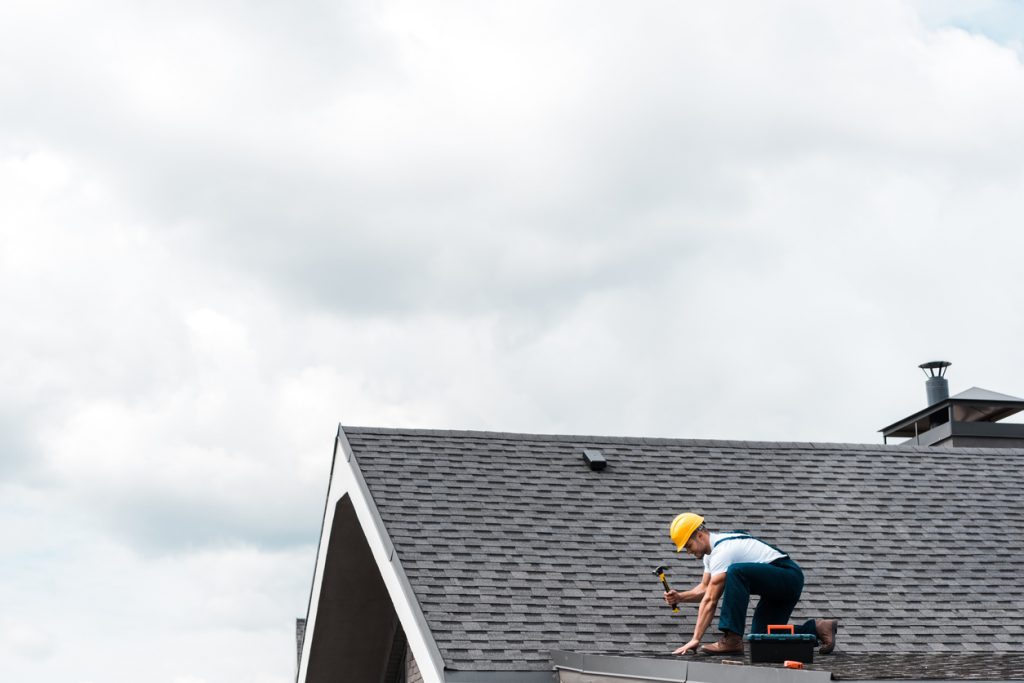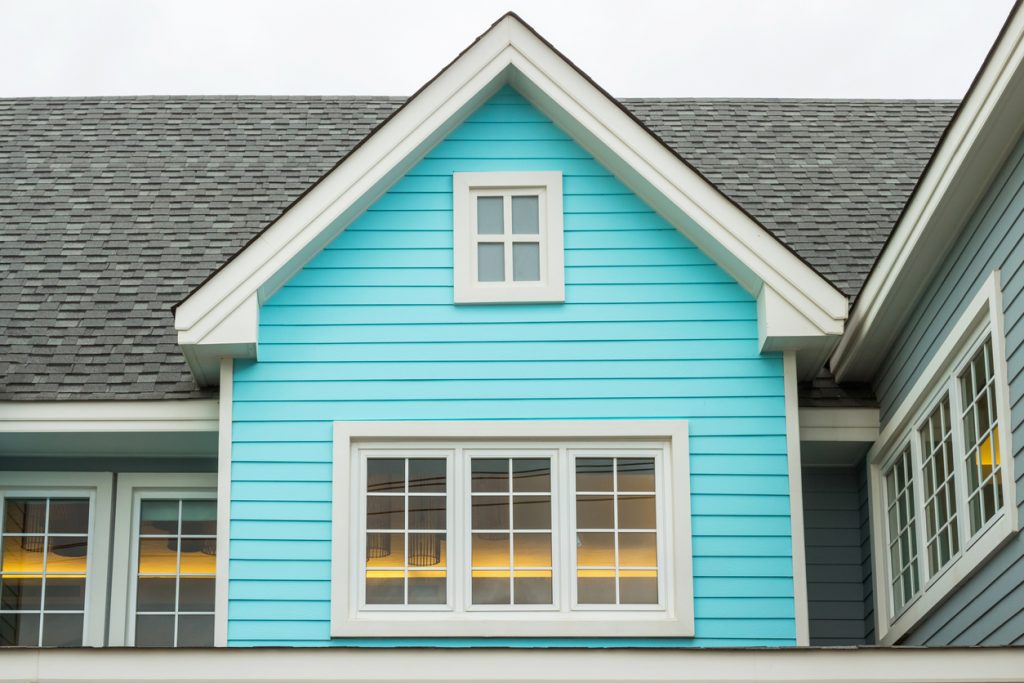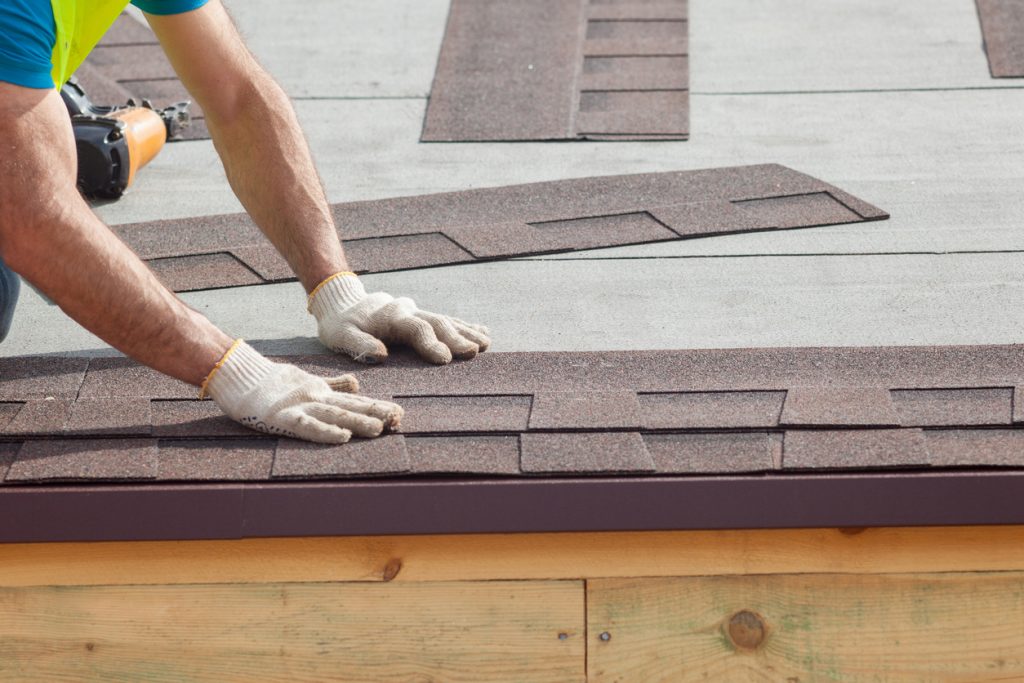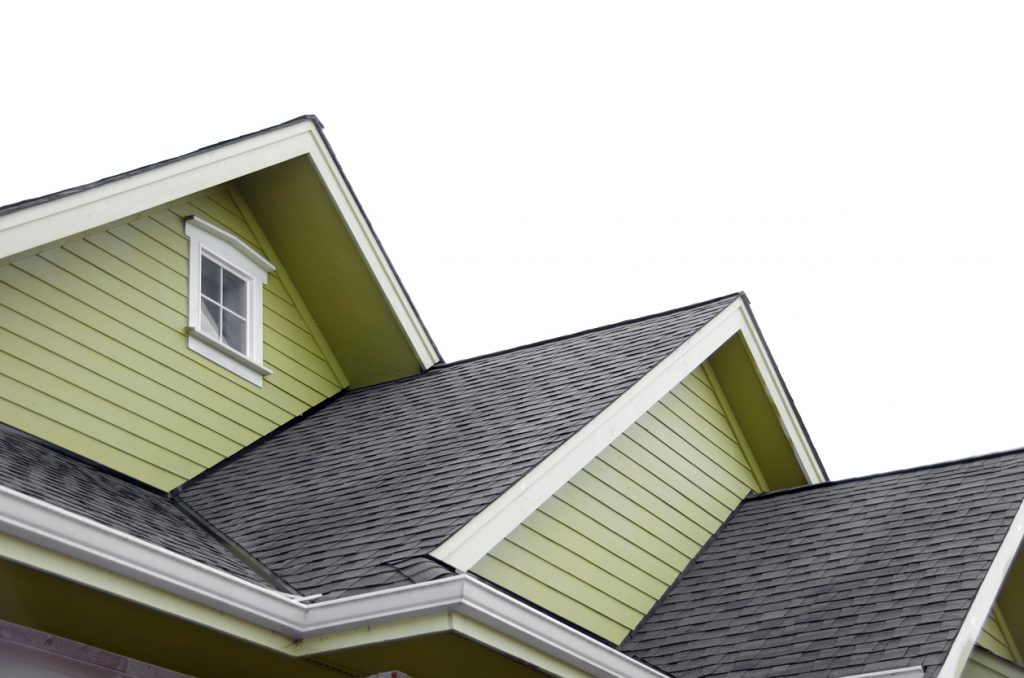If your roof is starting to show signs of aging, you may be considering roof replacement—especially if your roof is leaking or unable to keep water, wind, heat, or cold out of your home. However, if you’re thinking of replacing your roof, it’s important to understand the costs associated with roof replacement as these projects can get expensive quickly. The cost to replace shingles on a roof can vary greatly but typically falls between $5,352 and $10,830.
Average Roof Replacement Cost

The average cost of roof replacement will vary depending on your location, shingles, size and pitch of your roof, roofing company, and location. For example, cities in the west, like Denver, have a slightly higher cost at around $9,000, while southern cities like Austin cost around $7,000.
The national average of roof replacement cost for homeowners is between $5,352 and $10,830. This cost can be broken down to 40% for the materials and 60% for the labor. Most roof replacement quotes will include the removal and disposal of old shingles and the installation of new shingles. You’ll also want to ensure the quote includes a 5- or 10-year warranty.
Cost to Replace Roof Shingles

Tearing off and replacing roof shingles typically costs between $1 to $5 per square foot for an average price of $1,000 to $1,500. If you’re working with a contractor who charges hourly, you can expect to pay $40 to $80 per hour. Should your roof require extra repairs, you can expect to pay an additional $1,000 to $10,000, depending on how extensive the repairs are.
The cost to replace roof shingles will also depend on the type of material you’re using. Below is the average replacement cost per square for a few common roofing materials:
| Type of Shingle | Price |
| Three-Tab Asphalt | $150-$200 |
| Metal | $75-$1000 |
| Steel | $250-$375 |
| Slate | $900-$1600 |
| Copper | $1,100-$1,500 |
Roofing Labor Cost Per Square Foot

As previously stated, labor costs for roof replacement are around 60% of the total cost. Most roof replacement companies charge per square with the cost ranging between $150 to $300 per square. Labor costs are also dependent on your roof’s pitch and slope, with most companies charging a higher rate for a steeper sloped roof.
For example, if the total roof replacement cost is $7,500, you can expect to pay around $4,500 for labor and overhead costs. This cost may be higher if your roof is steeper, as it may take longer to tear off and replace shingles.
Cost to Install an Entirely New Roof

If you’re looking to replace your roof, including the shingles and the underlying structure, you can expect to pay between $10,000 to $20,000. On average, most homeowners spend between $3.50 to $5.50 per square foot to install. This price usually includes the cost of materials, removal of old shingles, disposal fees, installation, labor, and warranty. Please note this cost to replace shingles is dependent on the type of shingles you’re installing, the pitch of your roof, location, and roofing company.
Things to Consider When Replacing Your Roof
When estimating roof replacement costs, there are several factors to take into consideration—especially if you are considering making repairs on your own. Typically, once you factor in the cost of individual components, as well as the safety risks and quality concerns, you’ll find that it is best to hire a professional. When calculating the cost, consider the items listed below, along with anything else you can think of:
- nails
- underlayment
- ice & water barrier
- starter shingles
- ventilation
- roof flashing
- tools
Roof Replacement Cost vs Roof Repairs
If repairing your roof will accomplish the same purpose as replacing, it may be worth putting off getting a new roof for a little while longer. However, if your roof is getting pretty old and shabby looking, is leaking, or has a risk of damaging anything beneath the shingles, it is most likely worth getting a new roof.
Roof replacement costs will vary depending on your area, the materials, and the company you hire. On average, a new roof costs around $7,500, while the average for repairs is only $550. Slate roof repairs will cost more than asphalt roof repairs, and the amount of damage will also be a factor.
Signs You Need a New Roof
Check for signs you need a new roof before attempting to repair damages. Your roof may be worse off than you originally thought. Use the checklist below for quick reference.
- Attic – Check your attic for signs of water damage, sagging areas, and dark streaks and stains. Also, make sure you can’t see daylight getting in through the roof boards.
- Leaks or Water Damage – Look for leaks or water damage on your shingles, roof, ceilings, or attic. If you find any, you’ll likely need to replace the protective layer beneath the shingles.
- Granules – Asphalt shingles contain tiny granules that begin to flake off when shingles dry out with age. If you notice a few granules here and there, you’re probably fine. Large amounts of granules in gutters and around your home are not a good sign.
- Shingles – When your shingles begin curling, cracking, breaking, or are missing altogether, it may be time for a new roof. A few missing shingles from a wind storm can be replaced, but the more shingles that are showing symptoms, the more likely it is you’ll need to replace your roof.
- Damages – Damaged flashing and any other areas on or around your roof that are breaking, rotting, or otherwise having trouble are another sign you need to take action.
- Dark Spots – Dark spots indicate aging and sometimes weakening, especially if your roof is made out of metal and is rusting.
Is Replacing Your Roof a Good Investment?
A roof replacement is typically a good investment, but can sometimes be delayed with repairs. You will need to examine your roof and compare costs to determine which is best for you. You may also want to consider Roof Maxx roof rejuvenation to add a few years to your roof before replacing it.
FAQ’s
How much does it cost to replace a roof on a 1500 square foot house?
For a 1500 square foot house, you will typically spend between $5,500 and $8,000.
How much does it cost to replace a roof on a 2200 square foot house?
For a 2200 square foot house, roof replacement costs are typically estimated at below $13,000.
How do I estimate the cost of a new roof?
The best way to get an accurate cost expectation for a new roof is to ask several different companies to provide estimates. This way, you’ll be able to narrow it down to a reasonable range. Remember to include shingle removal, labor, materials, taxes, and cleanup.
Should I pay cash for a new roof?
If you can pay cash for a new roof, some contractors will quote you a lower rate. In addition, paying with cash or check lets you avoid interest and future payments, and you won’t need a credit check. However, paying in cash can be risky. Make sure to have a receipt and record of all current and future payments. Also, beware of a roofer who asks for an excessively large deposit, or worse, the whole amount upfront, and make certain that any contractor you hire has adequate insurance coverage.
How do I calculate the height and pitch of my roof?
Your roof’s height and pitch should be listed on your building plans, if you have access to them. If not, you’ll need a ladder, a level, and some measuring tape. You can determine the pitch from your attic by placing your level below a rafter and measuring up. You could also measure from the level to the roof itself. Either way, you’ll want to measure up from the 12” mark on your level.
If you’d rather not climb to the attic or up on your roof (especially if your roof isn’t safe to walk on), you can also use your shingles to estimate the length, width, slope, and pitch of your roof. Since you know how big the shingles are, you can simply count them and add up the space each of them covers.
Cost of new gutters
New gutters average around $500 each for parts and labor, so around $1,000 total.
How Long Does a Shingle Roof Last?
Asphalt shingles last approximately 15 to 30 years and are the most common roofing material. Other materials will cost more to install, but will last from 20 to 60 years, depending on which type you use.
Contact Roof Maxx to Save Thousands on Roof Replacement
Roof replacement is an expensive, time-consuming process. Before you start ripping off your shingles, contact Roof Maxx. We’ll perform a careful inspection of your roof to determine if your home is right for our revolutionary roof rejuvenation treatment—which can save you thousands of dollars on roof replacement for asphalt shingles. Contact us today!





